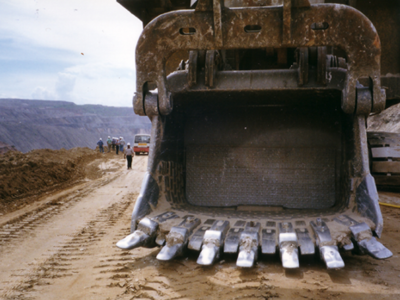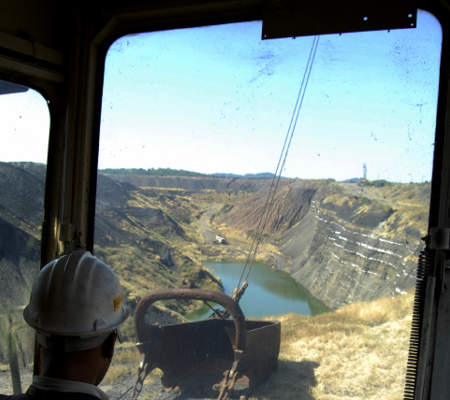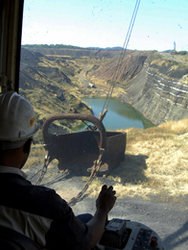Policy Brief
Boosting mineral revenues in Zambia
Policy options for a sustainable fiscal regime
This brief provides concrete proposals on how Zambia's government could create a robust fiscal regime to achieve a steady flow of mineral revenue and encourage increased local participation in mining — while ensuring environmental sustainability.
Zambia has had many mineral tax regimes and mining policies to try and stimulate development. However, the gap between policy prescription and successful implementation is still large, and revenues have been volatile
Zambia needs to again reform its mineral tax regime to create a sustainable investment environment and boost growth, especially given the country's high debt service
The green economy, net zero agenda, and increased demand for copper and cobalt in coming decades presents Zambia with new opportunities, but only if more investment is secured
Promoting investments in innovation, including green technologies, downstream linkages with the rest of the economy, and boosting government and private sector capacities are vital
Zambia’s copper riches have been both liberating and limiting in revenue terms providing unplanned resource inflows during market booms and causing spending difficulties during market troughs (Figure 1).
Since privatization of the mines began in the late 1990s, the Zambian government has repeatedly changed its mining policies, including its mineral tax regimes, to boost revenues. Yet success has been limited, and indeed many investors see the system as unstable. Sustained revenue growth requires a stable policy environment and ownership structure of the mines.
Resource nationalism should be avoided since Zambia needs private capital and the latest technology, but mining will not thrive as an economic enclave dominated by foreign mining companies. Success requires more local participation in mining to create stronger links to manufacturing and agriculture together with a more equitable sharing of revenues between stakeholders.
From base metal to ‘new oil’: implications of copper’s renaissance
The green economy and the net zero agenda are opening a whole new chapter for Zambia’s mining. Renewable energy technologies and electric vehicles (EVs) need copper and cobalt, higher prices are forecast, and mining companies are keen to invest.

Zambia should encourage public and private investment, including in green mining technologies, and in downstream linkages with the rest of the economy. Building capacities within government and the private sector is vital to realizing the green economy dividend: this requires policy preparedness and coherence. Nothing should be taken for granted. Metals booms are temporary, and if poorly handled they can leave the economy in a weaker position and more dependent on mining than before. Policy must be flexible in managing the new opportunities, with a focus on fiscal and environmental sustainability.
Designing effective mineral revenue policies
Effective mining tax policy must be context specific and not applied mechanistically or allowed to swing unduly in response to domestic political pressure. Higher taxes have not always translated into sustainably higher mineral revenues for Zambia. Investor uncertainty arising from frequent tax changes results in lost production capacity which is difficult to quickly recoup. Policy should instead focus on ensuring a stable operational environment for mining to preserve a robust level of output amidst booms and busts in metals prices and shifting domestic politics.

Source: Zambia Revenue Authority (ZRA).

Mining companies usually take advantage of all available tax loopholes to maximize their profits. The capacity of the Zambia Revenue Authority (ZRA) to prevent tax avoidance and evasion among mining companies can be strengthened by creating a dedicated and high-level tax unit for mining within ZRA, led by a commissioner. Communication and co-ordination on mining policies and outcomes between the Ministry of Finance, the ZRA and the mining companies also needs much improvement.
The government must bridge the competence gap between the line ministries and the mining companies. To effectively supervise the mining sector, the responsible agencies must be able to conduct financial and production audits, business negotiations, mineral sector analyses, and metal output projections.
Increased local ownership and joint ventures
Today, the State is the largest single owner of the mines, although its role in their management is scattered and largely passive. Increasing the share of local ownership (private and public) of Zambia’s mining assets, including through joint ventures, could cure the country’s perennial fears over revenue dissipation and capital flight, enhance corporate social responsibility in mining, and contain the politics of resource nationalism.
Before nationalization in the 1960s and 1970s, mining tax policy was used to some extent to strengthen inter-sectoral linkages, increase value-added downstream, boost industrialization, and incentivize local ownership of parts of the mining industry. More could be done to support these dynamic aspects of mining sector links to the rest of the economy.
The Zambian government should:
Adopt a mineral tax regime which enhances revenues from all the country's mineral resources by encouraging investment to sustain and grow production in an environmentally sustainable way
Enhance local ownership of mineral assets to boost efficiency through broader local participation and, hence, assuage resource nationalism
Revamp institutions to monitor and encourage mining, ensure effective and stable taxation and consider creating a dedicated and high-level unit for mining within ZRA
Actively participate in the minerals value-chain of the global green economy, by adding local value to Zambia’s copper and cobalt that are key inputs into the manufacture of renewable energy technologies and EVs.
A revenue stabilization fund could help alleviate domestic spending pressures, while an offshore sovereign wealth fund could help bolster the country’s international reserves. Both could reduce the country’s vulnerability to external shocks and reduce the need to resort to extraordinary revenue generation measures.
In developing a sustainable mining tax regime, Zambia could look at best practices in other mining jurisdictions, which demonstrate the benefits of longer-term policy and ownership commitment. Botswana’s success in joint ventures and in encouraging more local valued-added in mining is instructive. Where appropriate, the government should hire specialized advisory agencies from abroad to enhance its negotiating capacity and achieve the best possible outcomes.
 Join the network
Join the network